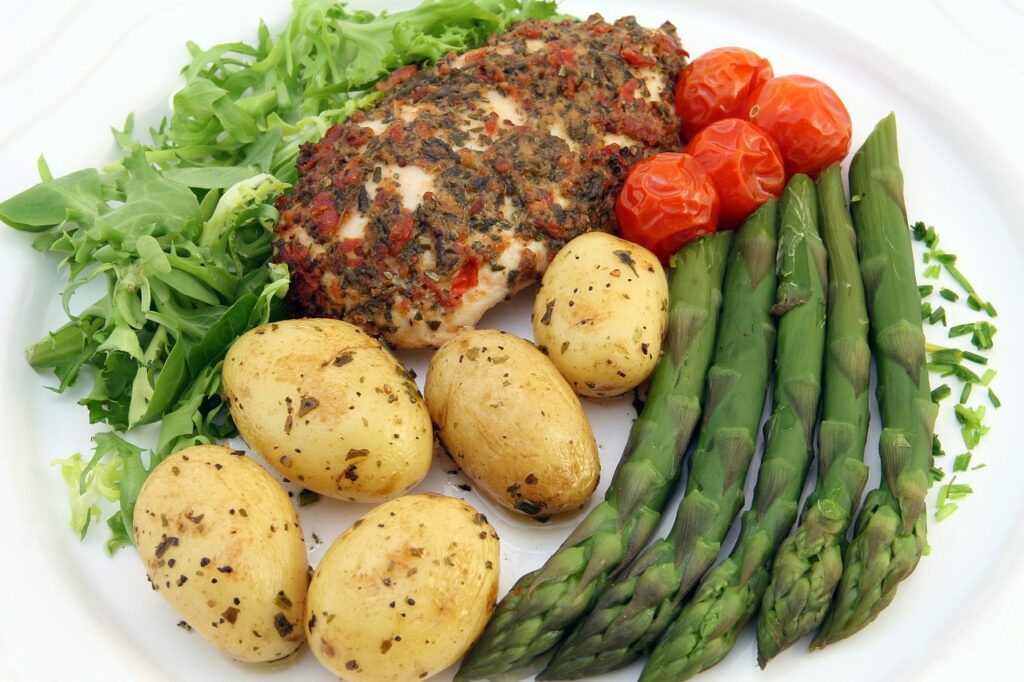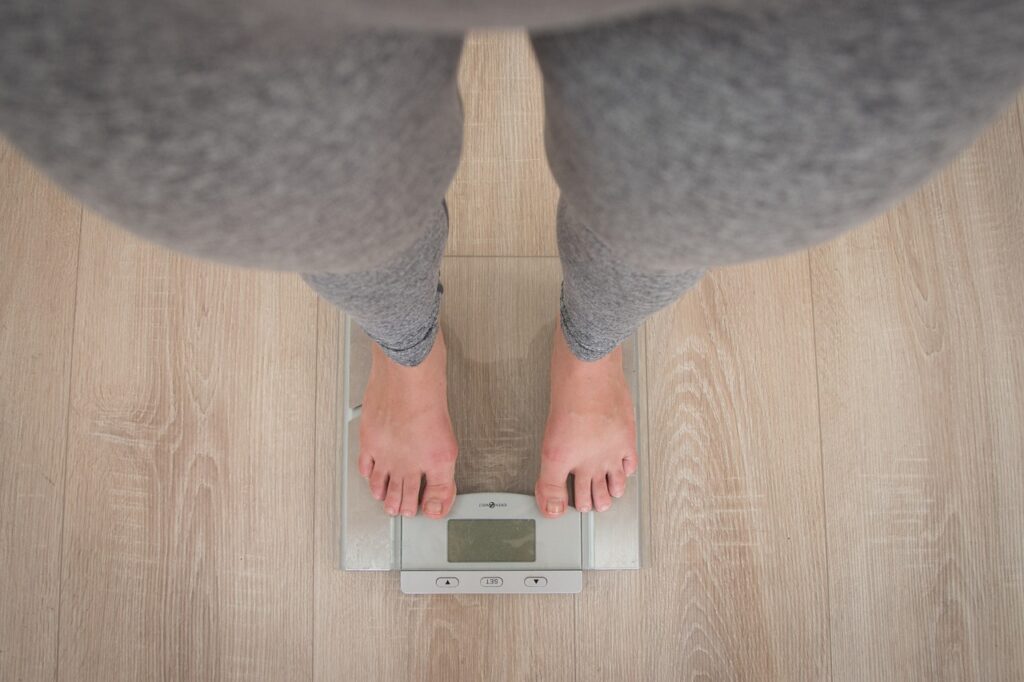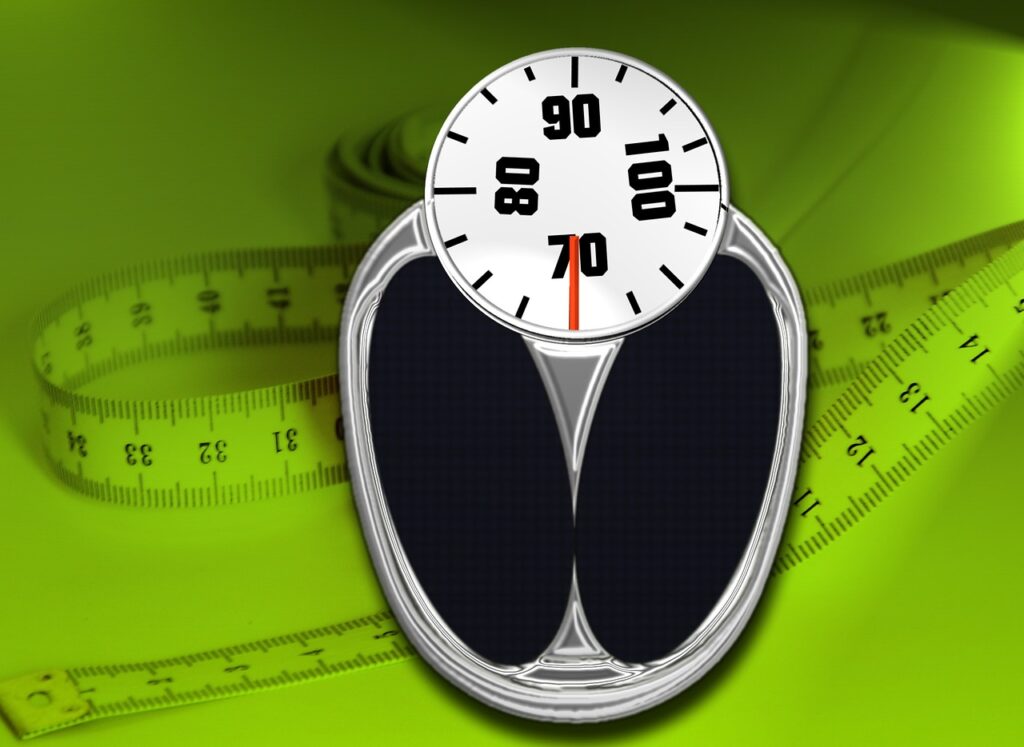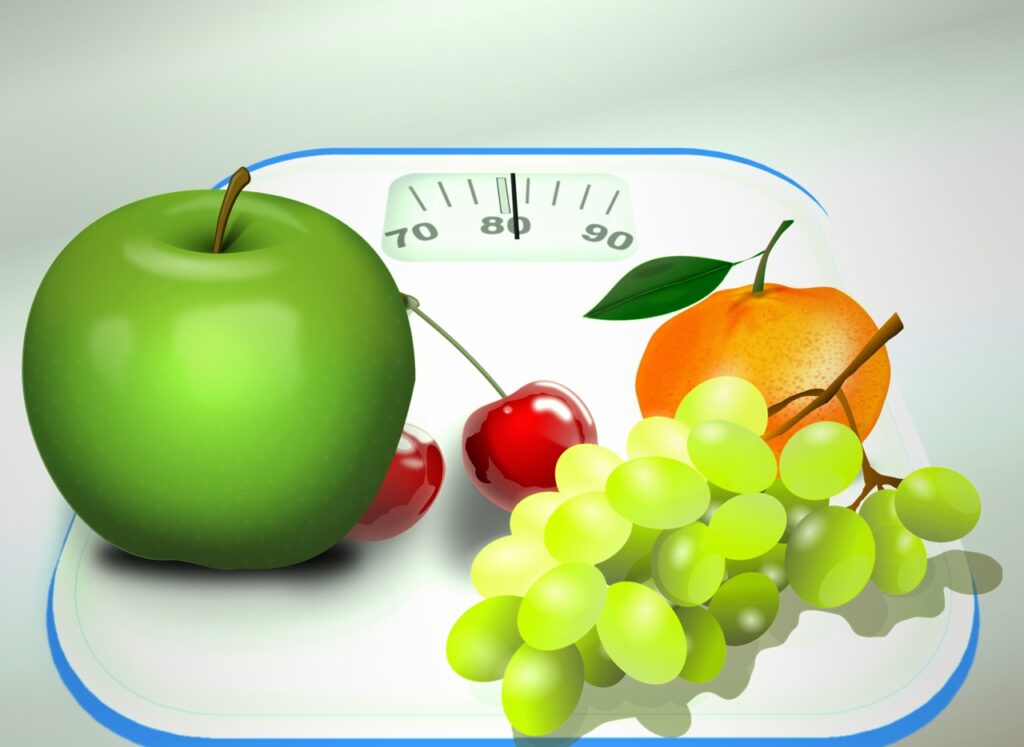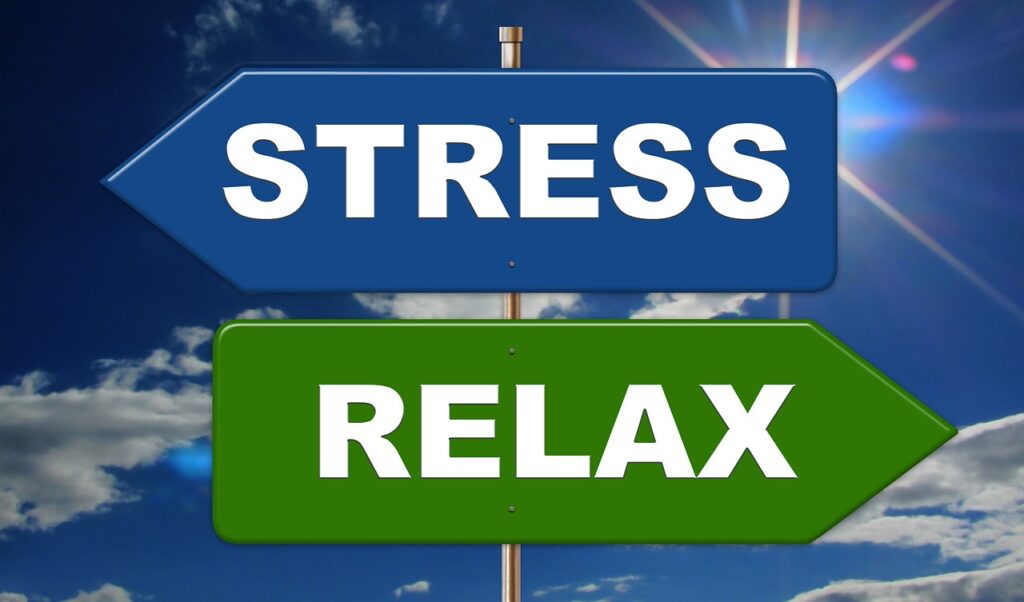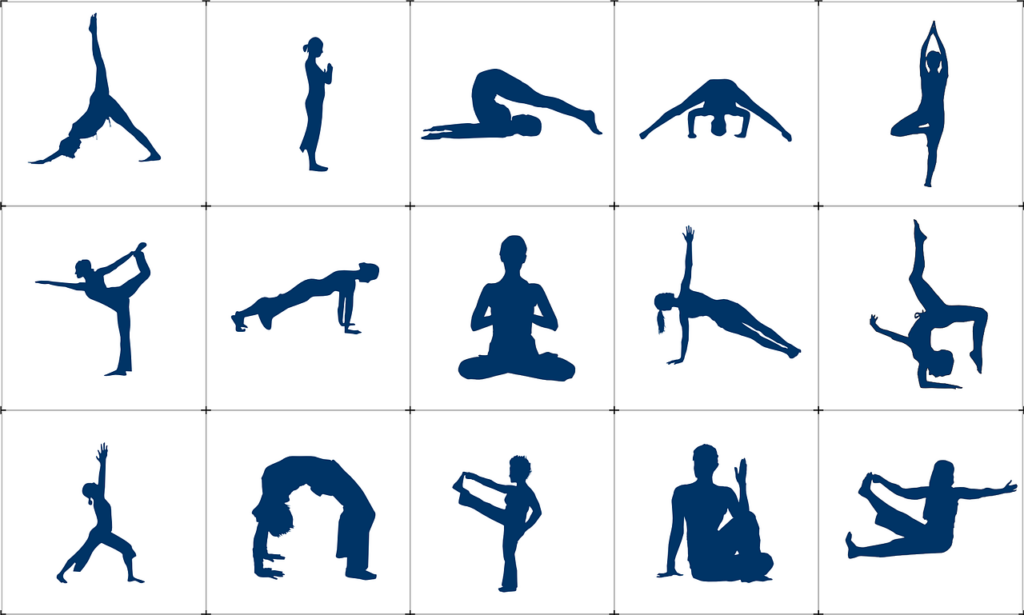The Best 8 Healthy Weight Management Strategies
Are you looking for effective and sustainable ways to manage your weight? Effective weight loss strategies for a healthy lifestyle and weight management are not only about losing weight, but it also involves maintaining a healthy weight and lifestyle.

Here are the best 8 healthy weight management strategies:
Balance Your Food Choices
“Balance Your Food Choices” is a weight management strategy that emphasizes the importance of making healthy and balanced food choices. It means that you should aim to consume a variety of foods from all food groups in the right proportions to ensure that you are getting all the necessary nutrients for your body to function properly.
To implement this strategy, it is important to understand the food groups and their respective nutritional values. These groups include fruits, vegetables, grains, protein, and dairy. You should aim to consume a balanced amount of each of these groups every day to ensure that you are meeting your nutritional needs.
In addition to balancing your food choices from the different food groups, you should also aim to eat a variety of different foods within each group. For example, within the fruits group, you could choose to eat apples, bananas, berries, and citrus fruits to ensure that you are getting a wide range of nutrients.
One of the healthy weight loss techniques for long-term success is to pay attention to portion sizes and avoid overeating. Even healthy foods can lead to weight gain if consumed in excessive amounts. Try using smaller plates and bowls to help with portion control.
Caloric balance is the key to managing your weight. You do not have to give up your favorite foods just because they are high in calories.
Recommended Daily Calories
The average recommended daily caloric intake is 2200 calories for males and 1800 calories for females. These values are based on the average weight and physical activity levels of male and female Singaporeans.
For a more personalized and accurate caloric requirement, you would need to take into account your age, gender, height, weight, and activity level. Here’s a useful calorie calculator that you can use to generate your recommended caloric intake figure.
When you eat more calories than what your body uses, these extra calories will be stored as fat in your body, leading to weight gain. Total daily energy expenditure (TDEE) refers to the total number of calories your body expends in 24 hours, including calories burned through physical activity and basic metabolic activities. Therefore, if you want to lose weight, the number of calories you consume should be less than your TDEE.
To balance your calorie intake, you can try one of the following:
- Smaller serving sizes
Exercising portion control by reducing your food intake can help you lower your calorie intake so that you do not consume more calories than you burn. Control your food portions by using a smaller serving plate, sharing desserts, and packing home leftovers if you can’t finish your food.
- Budget your calories
If your favorite foods are high in calories, you do not have to give them up just because you need to control your weight. Furthermore, studies suggest that avoiding your favorite foods altogether makes them irresistible and may cause you to give in to food cravings, which could in turn lead to overeating.
What you can do is include them but make sure you eat within your caloric allowance. If you choose to have a high-calorie meal, choose a lower-calorie option for your next meal so that your total calorie intake does not exceed your daily calorie allowance. For example, if you meet your friends for a buffet in the evening, try to have a lighter and healthier meal for lunch!
*Proven strategies for healthy weight management
Watch What You Eat
“Watch What You Eat” is a weight management strategy that emphasizes the importance of being mindful of the food you consume. It involves paying close attention to the quality and quantity of the food you eat. This strategy is essential for individuals who want to manage their weight effectively.
Healthy food does wonders for the body. Be mindful of the food choices you make and select healthier options whenever you can. Here are a few simple rules to bear in mind:
- Abandon the refined grains! Switch to whole-grain foods
Whole grains could help you manage your weight as they help keep you feeling full longer. It is because wholegrain foods are higher in fiber, which provides bulk. In addition, they are generally digested at a slower rate, hence prolonging the feeling of “fullness”. You can include a wide variety of wholegrain foods (e.g. wholemeal bread, brown rice, and oats) in your diet. When shopping for groceries, be sure to look out for the Higher in Whole-grain Healthier Choice Symbol.
- Choose and prepare food with less fat
Cutting down on high-fat foods will reduce your daily calorie intake and prevent unnecessary weight gain. Did you know that 1g of fat contains 9 calories while the same amount of protein or carbohydrate only contains 4 calories?
When you cook:
• Choose healthier oils that are lower in saturated fats, such as sunflower, soya bean, corn, canola, and olive oil.
• Choose fresh, lean meats/poultry over processed, fatty meats, and remove any visible fat.
To watch what you eat, it’s important to start by understanding your body’s nutritional needs. This means knowing the recommended daily intake of different food groups and ensuring that you consume a balanced diet that includes a variety of foods from each group. This can include vegetables, fruits, whole grains, lean proteins, and healthy fats.
It’s also important to pay attention to portion sizes. Many people consume more calories than they need because they eat larger portions than necessary. You can use tools like measuring cups, food scales, and calorie-tracking apps to help you monitor your portions and ensure you’re not overeating.
In addition to portion control, it’s important to be mindful of the nutritional content of the food you consume. This means reading food labels and understanding the ingredients in the foods you eat. You should aim to consume foods that are high in nutrients and low in calories, saturated fat, and added sugars.
Another aspect of watching what you eat is being aware of your eating habits. This includes avoiding mindless snacking, emotional eating, and eating too quickly. To avoid these habits, you can try practising mindful eating, which involves paying attention to your senses while eating, such as the taste, texture, and smell of the food. This can help you enjoy your food more and prevent overeating.
*Weight loss strategies for busy lifestyles

Stay Hydrated
Water is essential to our bodies and plays a crucial role in maintaining our weight. Drinking water is a simple weight loss strategy and can help us feel full, which reduces the amount of food we eat. It also helps regulate our body temperature, transport nutrients to our cells, and remove waste from our bodies.
Research has shown that drinking water before meals can help reduce the number of calories consumed during the meal. Drinking at least eight glasses of water a day is a good way to stay hydrated and promote weight management. You can also consider drinking other low-calorie beverages such as herbal teas and coconut water.
Staying hydrated is an important aspect of maintaining a healthy body weight. Dehydration can lead to several negative effects on the body, such as fatigue, headaches, and poor digestion. When you’re dehydrated, your body may mistake thirst for hunger, causing you to overeat or snack unnecessarily.
To stay hydrated, it’s important to drink plenty of water throughout the day. Aim for at least 8 glasses of water per day, and even more if you’re physically active or in a hot climate. You can also include other fluids such as herbal teas, low-fat milk, and unsweetened fruit juice to help you stay hydrated.
Tips fo hydration
One way to make it easier to stay hydrated is to carry a reusable water bottle with you throughout the day. This will make it easy to drink water whenever you feel thirsty and will help you keep track of how much you’ve consumed. Another tip is to add flavor to your water, such as by infusing it with fresh fruits or herbs, to make it more appealing and enjoyable to drink.
It’s also important to be aware of the signs of dehydration and take action if you notice them. Some common signs of dehydration include dark yellow urine, dry mouth and throat, and a headache. If you experience these symptoms, try drinking more water and other fluids, and avoid sugary or caffeinated beverages that can dehydrate you further.
By staying hydrated, you’ll not only support your body’s weight management efforts, but also enjoy a wide range of other health benefits, such as improved digestion, clearer skin, and increased energy levels. So make sure to prioritize drinking enough water and other fluids as part of your overall weight management strategy.
*12 Healthy weight management tips

Be Physically Active
Physical activity is an important component of weight management. It helps us burn calories, strengthen our muscles, and improve our overall health. It is recommended that adults should aim for at least 120 minutes of moderate-intensity physical activity or 75 minutes of vigorous-intensity physical activity each week.
If you are new to exercise, start with light activities such as brisk walking, cycling, or swimming. You can also try to incorporate physical activity into your daily routine by taking the stairs instead of the elevator, parking further away from your destination, or going for a walk during your lunch break.
WalkingPad Double-Fold Treadmill
Being physically active is an important part of weight management. Exercise can help burn calories, build muscle, and increase metabolism. In addition, physical activity can also improve cardiovascular health, mental health, and overall well-being.
There are many different types of physical activity to choose from, and it’s important to find an activity that you enjoy and that fits into your schedule. Some options include walking, running, cycling, swimming, dancing, strength training, and team sports.
How much time you should exercise
It’s recommended to aim for at least 150 minutes of moderate-intensity exercise or 75 minutes of vigorous-intensity exercise per week. This can be broken down into shorter sessions throughout the week, making it easier to fit into a busy schedule.
To make physical activity a habit, it can be helpful to schedule it into your day or week and to find a workout buddy or group to help keep you accountable and motivated. It’s also important to listen to your body and rest when needed, as overtraining can lead to injury or burnout.
In addition to structured exercise, incorporating more movement into your daily routine can also be beneficial. This can include taking the stairs instead of the elevator, parking farther away from your destination, or taking a short walk during your lunch break. Every little bit of movement can add up and contribute to your overall physical activity level.
Remember, being physically active doesn’t have to be a chore – it can be a fun and rewarding way to improve your health and manage your weight.
*Healthy weight management strategies for vegetarians
Get Adequate Rest and Sleep
Sleep is important for our physical and mental health, and it plays a vital role in weight management. Lack of sleep can disrupt the hormones that regulate our appetite, which can lead to overeating and weight gain. It can also affect our metabolism and energy levels, making it harder for us to be physically active.
Sleep is necessary for the body to function properly, repair and regenerate tissues, and consolidate memories. Lack of sleep can lead to various health issues, including weight gain, high blood pressure, diabetes, and depression.
To get adequate rest and sleep, it is essential to establish a healthy sleep routine. This includes maintaining a consistent sleep schedule, aiming for seven to eight hours of sleep per night, and creating a relaxing sleep environment. This may involve dimming the lights, reducing noise levels, and maintaining a comfortable temperature.
It is also important to avoid activities that can interfere with sleep, such as consuming caffeine and alcohol before bedtime or engaging in stimulating activities like using electronic devices or watching TV. Establishing a relaxing pre-sleep routine, such as reading a book or taking a warm bath, can also help prepare the body for sleep.
For individuals who struggle with falling asleep or staying asleep, various relaxation techniques can be employed, such as meditation, deep breathing exercises, or guided imagery. In some cases, seeking the assistance of a healthcare professional may be necessary to address underlying medical conditions or sleep disorders that may be interfering with restful sleep.
Adults should aim for seven to nine hours of sleep per night to promote optimal health and weight management. To improve the quality of your sleep, you can try to establish a regular sleep schedule, create a comfortable sleep environment, and avoid electronic devices before bedtime.
*9 Successful weight management strategies for athletes
Practice mindful eating
Practicing mindful eating is a technique that involves being fully present and engaged while eating. Instead of simply shoveling food into your mouth, mindful eating encourages you to slow down and savor each bite. By doing so, you can develop a greater awareness of your body’s hunger and fullness signals, and this can help prevent overeating.
One of the keys to mindful eating is to eat without distractions. This means avoiding activities such as watching TV, using your phone, or reading while you eat. When you are distracted, you are less likely to pay attention to your food and more likely to eat mindlessly. This can lead to consuming more calories than you need and feeling less satisfied with your meal.
Another important aspect of mindful eating is paying attention to the sensory experience of eating. This means focusing on the taste, texture, and aroma of the food you are eating. By savoring each bite and enjoying your food, you are more likely to feel satisfied with smaller portion sizes.
It’s also helpful to tune into your body’s hunger and fullness signals. Before you start eating, check in with yourself and ask how hungry you are on a scale from 1 to 10. During your meal, take breaks and assess how satisfied you feel. This can help you gauge when you are full and prevent you from overeating.
Practicing mindful eating can be a powerful tool in your weight management journey. By slowing down, being present, and paying attention to your body’s signals, you can develop a healthier relationship with food and make more informed choices about what and how much you eat.
Have Regular Meals
Eating regular meals is an essential part of a healthy lifestyle. However, with busy schedules and fast-paced lives, it can be easy to overlook the importance of having regular meals. In this blog post, we will discuss why having regular meals is crucial for maintaining good health and provide some tips to help you incorporate regular meals into your daily routine.
Maintains Blood Sugar Levels
Having regular meals is essential for maintaining stable blood sugar levels. When we go long periods without eating, our blood sugar levels drop, and this can lead to feelings of fatigue, weakness, and even dizziness. This drop in blood sugar levels can also cause us to overeat or make unhealthy food choices, leading to weight gain and other health problems.
Boosts Metabolism
Eating regular meals can also help boost your metabolism. When we eat, our body uses energy to digest food. Eating small, frequent meals throughout the day can help keep our metabolism active, which can help us burn more calories and maintain a healthy weight.
Provides Nutrients
Having regular meals can also help ensure that we get all the essential nutrients our body needs to function correctly. Skipping meals can lead to nutrient deficiencies, which can affect our overall health and well-being. Eating a variety of nutritious foods at regular intervals can help provide our bodies with the necessary nutrients to maintain good health.
Here are some tips to help you incorporate regular meals into your daily routine:
- Plan Ahead: Planning your meals can help ensure that you have healthy options available when it’s time to eat. Try to prepare meals in advance or have healthy snacks on hand to avoid the temptation of unhealthy choices.
- Set Reminders: Use reminders on your phone or computer to prompt you to eat at regular intervals throughout the day.
- Eat Small, Frequent Meals: Eating small, frequent meals throughout the day can help keep your metabolism active and maintain stable blood sugar levels.
- Don’t Skip Breakfast: Breakfast is often called the most important meal of the day and for good reason. Eating a healthy breakfast can help jumpstart your metabolism and provide you with the energy you need to start your day.
- Make Mealtime a Priority: Make time for mealtime and try to eat in a peaceful environment without distractions. This can help you be more mindful of your food choices and prevent overeating.
Eating at regular intervals can help maintain stable blood sugar levels, boost metabolism, and provide essential nutrients to our bodies. By planning, setting reminders, eating small, frequent meals, and making mealtime a priority, we can incorporate regular meals into our daily routine and improve our overall health.
Strength-building activities
Strength-building activities, also known as resistance training, are exercises that aim to increase muscle mass, strength, and endurance. These activities involve working against resistance, such as weights, resistance bands, or body weight, to challenge and stimulate muscles.
200 HQ Fitness Training Videos
There are several benefits of strength-building activities, including improved muscle strength and endurance, increased bone density, improved balance and coordination, and a reduced risk of chronic diseases such as osteoporosis and type 2 diabetes. Additionally, strength-building activities can help with weight management, as building muscle can increase metabolism and help burn more calories.
Some examples of strength-building activities include weightlifting, resistance band exercises, bodyweight exercises such as push-ups and squats, and functional fitness exercises like lunges and planks. It’s important to incorporate a variety of exercises that target different muscle groups for a well-rounded strength-building routine.
When starting a strength-building program, it’s important, to begin with, lighter weights or resistance and gradually increase as your muscles adapt and become stronger. Proper form is also crucial to prevent injury and ensure that the correct muscles are being targeted. It may be helpful to work with a personal trainer or attend a strength-building class to learn proper techniques.
In addition to physical benefits, strength-building activities can also have mental health benefits. Exercise, in general, has been shown to improve mood, reduce stress and anxiety, and improve overall well-being. Strength-building activities, in particular, can provide a sense of accomplishment and confidence as you see improvements in strength and muscle tone.
*How to Lose Weight in 4 Simple Steps?

Get Free Notion Templates, Recipies, and Ebook! If you love what we do, fuel our work with a coffee!
Note: This article includes affiliate links. Your support is valued and comes at no additional expense to you.
Crypto Donation – 94TQXX1ENtkXgVmNwQNPzW2HKXXPYhHdzPRPkvtkMVgf
FAQ
Q1. What are healthy weight management strategies?
A1. Healthy weight management strategies are techniques that are used to achieve and maintain a healthy weight and lifestyle. They include strategies such as balancing your food choices, watching what you eat, staying hydrated, being physically active, and getting adequate rest and sleep. Mindful eating is another healthy weight management strategy that encourages individuals to pay close attention to the quality and quantity of food they consume.
Q2. What is mindful eating, and how can it help with weight management?
A2. Mindful eating is a technique that involves being fully present and engaged while eating. Instead of simply shoveling food into your mouth, mindful eating encourages you to slow down and savor each bite. By doing so, you become more aware of your body’s hunger and satiety signals, which can help prevent overeating and promote healthier food choices. Practicing mindful eating can also help reduce stress and increase the enjoyment of food.
Q3. Can weight management be achieved without exercise?
A3. While physical activity is an important component of weight management, it is possible to manage weight without exercise by focusing on dietary strategies such as portion control and mindful eating. However, incorporating regular physical activity into your routine has numerous health benefits beyond weight management, including improving cardiovascular health, reducing stress, and increasing overall fitness.
Q4. What are some other strategies for healthy weight management?
A4. Some other strategies for healthy weight management include reducing stress, practicing self-care, and seeking support from friends, family, or a healthcare professional. Reducing stress can help prevent emotional eating and promote healthy behaviors. Practicing self-care, such as getting enough rest and engaging in enjoyable activities, can help reduce stress and promote overall well-being. Seeking support from others can provide accountability and motivation for achieving weight management goals.



